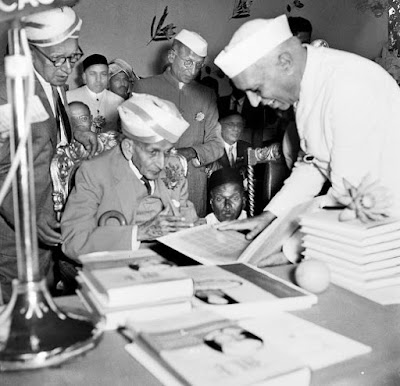This month, each day, except the four Sundays, I will be blogging about interesting features associated with Bengaluru, formerly known as Bangalore, as part of the Blogging from A to Z April Challenge
Sir Mokshagundam Visvesvaraya (1860 - 1962), or more popularly just Visvesvaraya or Sir MV, is among the most renowned civil engineers of India.
(Mokshagundam is a village in present-day Andhra Pradesh, but he was born in Muddenahalli on the outskirts of Bangalore.)
We are told that he was a man of very few words immersing all his time in academic and scholarly pursuits. |
| Courtesy: News18 |
This is how the then Prime Minister Jawaharlal Nehru described him in his centenary tribute: "Dreamer, thinker, and a man of action, not lost in the past but always thinking of the future, living an integrated life, bringing into existence and giving shape to dreams not for himself but for India and the people of India".
He was also the 19th Diwan (an equivalent of prime minister) of Mysore from 1912 to 1919.
 |
| Sir MV with Prime Minister Jawaharlal Nehru Courtesy: Deccan Herald |
He steered several irrigation projects that not only helped provinces fight flooding during rains but also utilise water efficiently. His counsel was sought for the building of dams in various states, including Mysore's Krishna Raja Sagara dam.
While he was in the administration of Mysore, he pioneered the setting up of a slew of institutions from banks and schools to factories. Like for example, Bangalore Agricultural University, the State Bank of Mysore, Mysore Soap Factory, Mysore Iron & Steel Works (presently Visvesvaraya Iron and Steel Limited), University Visvesvaraya College of Engineering, etc.
He received the Knight Commander of the Indian Empire from King George V in 1915, while he was the Diwan of Mysore.
Many educational and engineering institutions are named after him and his birthday, September 15, is celebrated as Engineers' Day.
(Tomorrow, again we go back in time to look at something historical)
